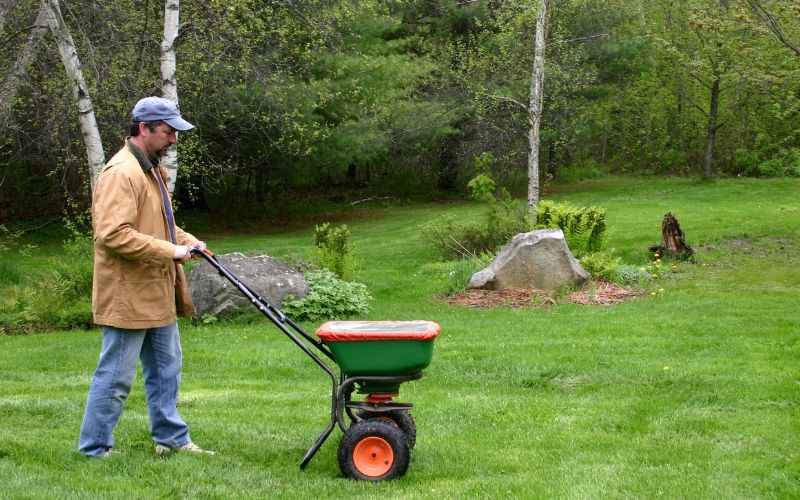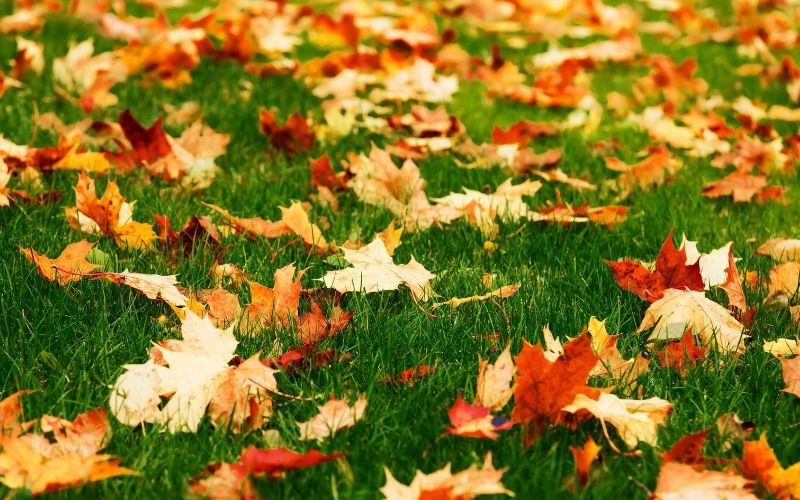Lawn Dormancy
Dormancy is a mechanism that grasses use to avoid conditions when inadequate moisture is available. The most noticeable aspect of dormancy is the brownish-tan color of the leaf blades. This often occurs under drought conditions and during colder months.

Drought-Induced Lawn Dormancy
Grasses have the ability to go dormant for differing lengths of time depending on their genetics and overall health. Most established lawns can stay in a drought-dormant state for 3-4 weeks without dying. If the drought goes beyond 4 weeks, it’s recommended to re-hydrate the lawn with deep, infrequent watering early in the day.
Daytime temperatures in the 80’s ⁰F, lawns can survive for 3-4 weeks, whereas climates in the 90’s ⁰F reduce that survival time frame to 2-3 weeks. Irrigate lightly, about ½ inch, every 3-4 weeks to help your lawn get through the hot and dry summer months. Watering will not green up the grass but will keep it alive. Infrequent and deeper watering prior to drought conditions will help develop deeper roots, which make the grass more sustainable.
Mowing The Lawn During Drought
During drought-induced dormancy, grass will grow at a much slower rate and in turn will not require frequent mowing. Taller grass will have deeper, more extensive root systems that will help the lawn to withstand summer stress. If you need to mow, follow the one-third rule; never remove more than the top one-third of the blade at each mowing. To help minimize stress on the leaf blade ensure your mower blade is sharp.
Fertilizing Your Lawn During Drought
During a dormant phase caused by heat or drought, an application of fertilizer will not bring a lawn out of dormancy. The grass is not growing because the roots have in essence shut themselves down. Milorganite can be applied to a dormant lawn during summer/drought conditions because the salt-free formula will not burn the lawn. Once growing conditions are favorable, with adequate moisture and air temperatures, the roots will be ready to take up nutrients from the soil.
Fall and Winter Lawn Dormancy
Cooler temperatures can send both northern and southern grasses into dormancy. Northern grasses can endure cooler weather better than other types of grass and typically begin to go dormant in the fall once soil temperatures drop to 50 ⁰F. Southern grasses can tolerate extremely warm temperatures and have a very low tolerance for cold weather. Southern grasses will typically begin to go dormant around mid to late October.
What is Dormant Fertilization?
Dormant fertilization is a jumpstart on spring. It’s applied to cool-season, Northern grasses after your lawn has lost most of its green color, you’ve stopped mowing your lawn because it no longer appears to be growing, and the cold weather has already set in. You’re not feeding the grass for the growth above ground but building up the food reserves so the grass will go into the winter strong and green up faster in the spring. Late fall is the most important time of year to fertilize.
When to apply Your Dormant Fertilizer Application
Dormant fertilization is for cool-season, Northern grass varieties such as Kentucky bluegrass, fescue, and perennial ryegrass. It’s applied as late in the season as possible, just before the first deep freeze or snowfall—generally after Halloween but before Thanksgiving. Timing will depend on the weather in your area.








